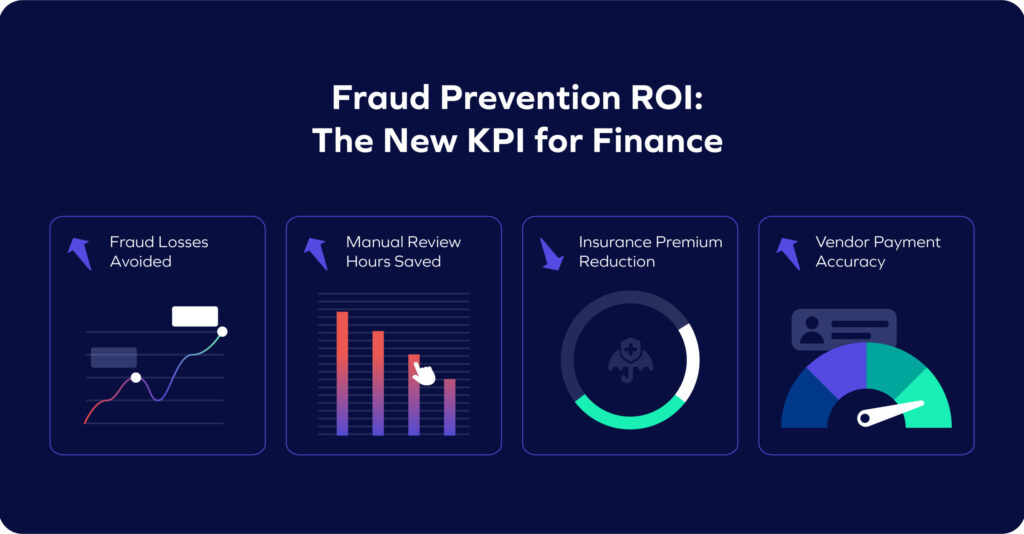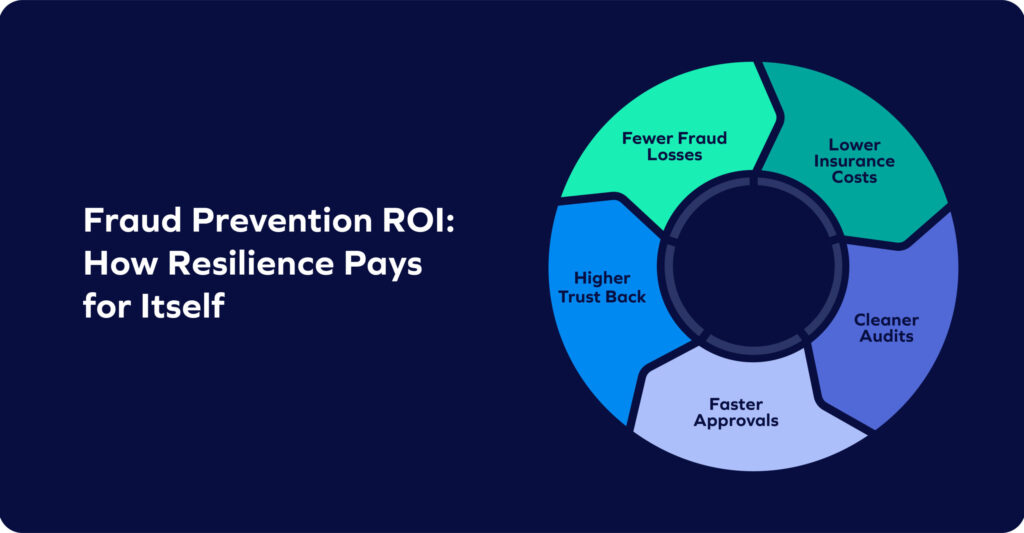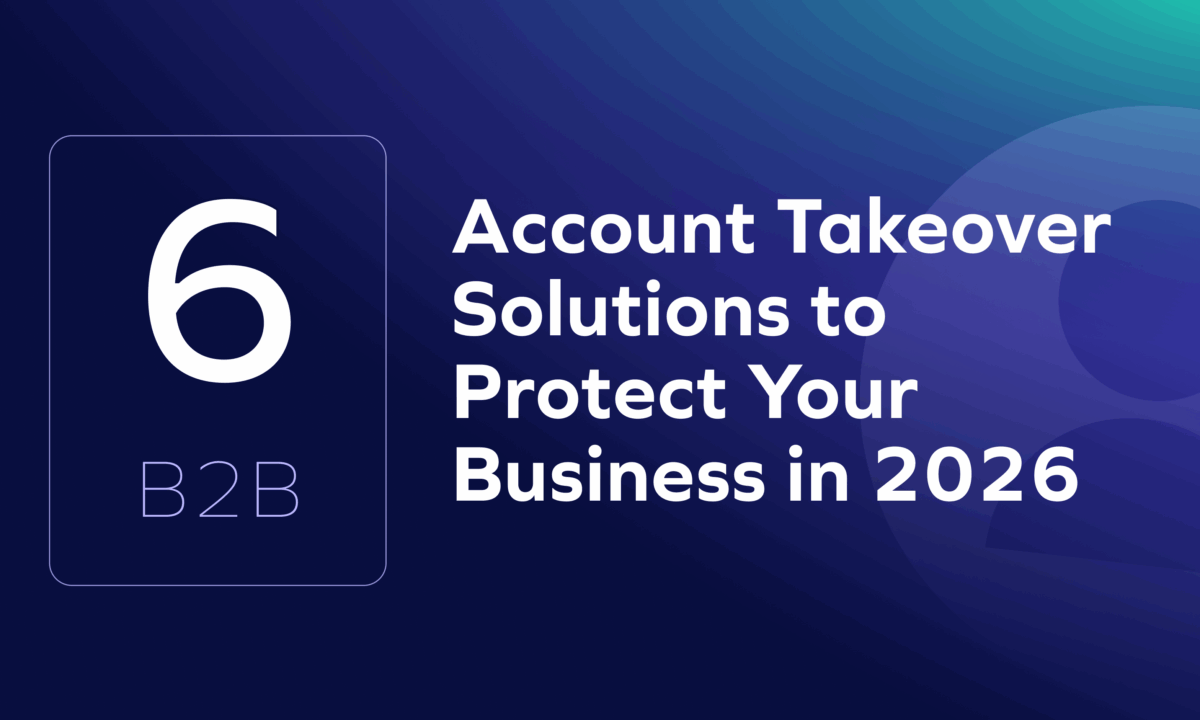“Cyber isn’t just about protection anymore—it’s about acceleration.”
Tomer Amitai, CFO of Natural Intelligence
For years, cybersecurity lived in the “cost” column: essential but rarely strategic. Now, that mindset is changing.
A recent Deloitte CFO Signals report found that more than half of CFOs now see themselves as key players in enterprise risk and cybersecurity oversight—a clear sign that fraud prevention has moved from IT overhead to financial priority.
As AI-driven fraud grows more sophisticated, finance leaders are evaluating fraud resilience like any other investment: by its ROI.
In this article, you’ll see how forward-thinking CFOs are redefining fraud prevention as a financial KPI, measuring it through efficiency gains, loss avoidance, and even lower insurance costs—and how that shift is reshaping the value equation for finance.

The Shift: Cyber as a Value Creator for Finance
The Deloitte survey found that 57% of CFOs now say they’re among the top leaders influencing enterprise strategy and risk management. This extends their reach into cybersecurity, data privacy, and fraud management. The reason is simple: the financial impact of fraud is too significant, and too measurable, to stay siloed in IT.
That evolution is something Tomer Amitai, CFO of Natural Intelligence, sees firsthand. In a recent episode of AI, Cybersecurity & the New Era of Fraud, Amitai described how his team began measuring fraud prevention in business terms. In other words, measuring it not just as a control, but as a value driver. For example, “reducing manual reviews lets us reallocate treasury and AP time to things with more strategic value.”
That reallocation is measurable. Every redundant review removed from the payment cycle accelerates reconciliation and frees skilled finance staff for higher-impact work—forecasting, analytics, and strategic planning. Efficiency, once invisible, now carries a real return.
In practice, fraud prevention has become a lever for:
- Operational efficiency: fewer manual checks, faster approvals, and cleaner audits
- Cash protection: direct prevention of financial losses
- Insurance optimization: lower premiums through stronger controls
That value extends beyond internal gains. Cyber and crime insurers are increasingly factoring fraud control maturity into underwriting. A 2025 Jumpcloud report, found that organizations with advanced detection and vendor validation tools received more favorable premiums. This is tangible proof that better prevention pays.
That’s the new CFO value equation: Security for security’s sake is out. Resilience that protects working capital is in.
Measuring What Matters: Fraud as a Financial KPI
Finance leaders are now embedding fraud resilience directly into their dashboards, tracking not just exposure, but performance.
“We implement measures to actually quantify loss control,” says Amitai. “Not headlines of risk, but how we see fraud losses and attempts reduce over time as a joint KPI.”
That “joint KPI” mindset is what’s transforming fraud prevention from a back-office process into a board-level metric. The most forward-thinking CFOs are reporting fraud prevention ROI through concrete data points such as:
- Fraud losses avoided—in dollars
- Attempts detected vs. losses realized
- Hours saved on manual validation
- Reduction in cyber insurance premiums
- Vendor payment accuracy rate

Each of these ties directly to CFO priorities: cash protection, liquidity improvement, and operational margin growth.
As Amitai explains, “Fraud losses tracked as a joint KPI between finance and security help us prove value in real terms.”
The proof matters. Data-driven fraud visibility doesn’t just strengthen controls—it builds credibility. Boards, investors, and auditors increasingly expect quantitative evidence that risk management is working.
According to the Association for Financial Professionals’ 2025 Payments Fraud and Control Survey, nearly eight in ten organizations experienced payment fraud, and many are expanding their risk dashboards to include operational metrics like fraud attempts, recovery rates, and control performance. This is a measurable shift in how finance teams demonstrate fraud prevention ROI and board-facing risk accountability.
The ROI Flywheel: How Prevention Pays for Itself
For CFOs like Amitai, the financial logic behind fraud prevention is clear: every dollar protected is margin preserved, and every hour freed is productivity returned.
That’s what creates the ROI flywheel—a compounding cycle where proactive controls continuously pay dividends. These dividends include:
- Stronger controls reduce the volume and velocity of attempted fraud.
- Fewer incidents mean fewer claims and lower insurance costs.
- Cleaner audits result in faster reporting and fewer compliance penalties.
- Higher trust with partners and vendors accelerates approvals and payment cycles.

“Cyber and finance generate more value together over time,” Amitai notes. “The expectation is for cybersecurity to become a process enabler—about acceleration, not restriction.”
In other words, the value of prevention compounds. As finance teams embed fraud metrics into their performance framework, resilience stops being an afterthought and becomes a multiplier of financial performance.
The CFO’s mandate has evolved. It’s no longer just about managing cost or risk; it’s about turning resilience into ROI. And those who measure it, prove it, and report it will lead the next wave of financially intelligent, fraud-resilient organizations.
Explore how CFO Tomer Amitai and IT leader Irina Singh are redefining fraud prevention ROI—from productivity gains to measurable loss reduction—in the full episode of AI, Cybersecurity & the New Era of Fraud











